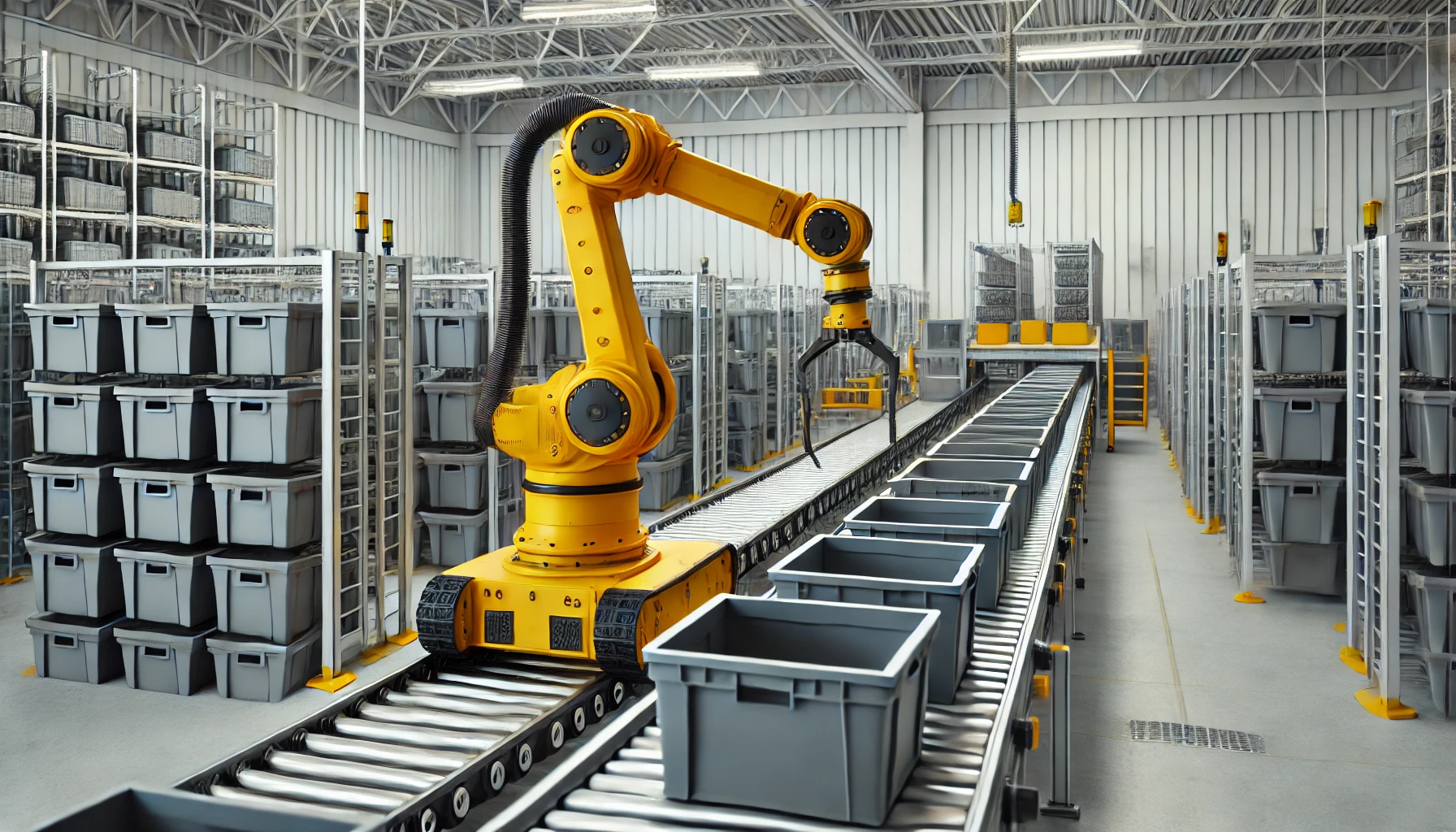Revolutionizing Warehouse Efficiency: The Role of Piece-Picking Robotics
Transform your warehouse operations with piece-picking robotics, the latest innovation driving efficiency and scalability in the supply chain industry.

Warehouse automation is evolving rapidly, driven by the latest advancements in robotics. These innovations are pushing beyond traditional conveyance technologies to meet the relentless demands of global fulfillment. This transformation is crucial for the supply chain industry to enhance productivity, reliability, and overall efficiency.
The challenge now is not about where to start but where to end up. Integrators and end-users must navigate the landscape, identify new opportunities, and integrate automation into their warehousing and supply chain operations to stay competitive.
Ensuring smooth and optimized operations among the various components of an automated warehouse has never been more difficult. Market leaders often tout the seamless integration of their systems, but significant challenges remain. Industry consolidation might streamline choices, leading to more sophisticated solutions and improved system performance.
Navigating the Maze of Choice
The rapid expansion of warehouse automation technology presents both opportunities and challenges. Stakeholders face a vast array of choices regarding technology, partners, and timing, which can lead to decision fatigue and maintenance of the status quo. System integrators can provide an end-to-end view, simplifying the decision-making process and ensuring success in warehouse automation by offering cohesive solutions tailored to unique needs.
Early adopters of innovative technologies are shaping the landscape by addressing individual pain points and attracting significant investment interest. The broader economic environment, marked by fluctuating interest rates and changing consumer behavior, influences the trajectory of warehouse automation. Despite economic uncertainties and a dip in venture-capital investment, e-commerce demands continue to rise, signaling latent demand for enhanced automation.
The Piece-Picking Paradigm
Piece-picking robots are at the forefront of this automation revolution. Once considered merely tools for picking individual items to fulfill orders, these robots are now transforming supply chains by addressing scaling challenges, enhancing efficiency, and boosting resilience. Advances in AI, machine learning, and robotics have expanded their capabilities far beyond simple, repetitive tasks. Modern piece-picking robots are equipped with advanced sensors, vision systems, and algorithms, allowing them to adapt to their environment, learn, improve, and make intelligent decisions in real-time.
These robots optimize entire operational workflows through advanced machine learning, impacting every facet of supply chain and e-commerce operations, from order fulfillment to returns. They integrate seamlessly with warehouse management systems, providing real-time data and analytics, enhancing inventory visibility, streamlining supply chains, and influencing warehouse layout and design.
Benefits of Piece-Picking Robots
- Efficiency and Productivity: Operate 24/7 or according to specific duty cycles, reducing turnaround times and increasing throughput.
- Scalability and Flexibility: Adapt to changing demands without significant downtime, scaling up or down as needed.
- Accuracy and Reliability: Advanced machine learning minimizes picking errors, enhancing customer satisfaction, reducing shrinkage, and speeding up packing and fulfillment.
- Data-Driven Insights: Continuous data collection offers valuable insights for strategic decision-making and process optimization.
As piece-picking robots become more sophisticated, their relationship with human workers in warehouses is evolving. Instead of replacing humans, robots are becoming valuable collaborators, augmenting human capabilities and creating safer, more efficient work environments. Robots can handle the most physically demanding and repetitive tasks, reducing injury risks and allowing staff to focus on more complex, strategic activities. This leads to higher job satisfaction, productivity, and improved safety and well-being for employees.
Investing in workforce training and upskilling is crucial to fully realize the benefits of human-robot collaboration. Workers need new skills to operate and maintain piece-picking robots and work effectively alongside these advanced machines. This requires investment in education and training programs and fostering a culture of continuous learning and innovation within the warehouse.
Robotic piece-picking is fast becoming a key driver of innovation in logistics and supply chain management. This transition opens up new opportunities for efficiency, flexibility, and strategic growth, paving the way for large-scale automation, safer work environments, better jobs for humans, more efficient order fulfillment, and higher customer satisfaction.